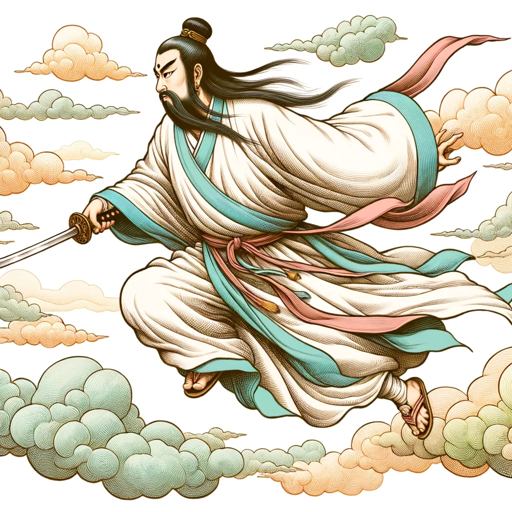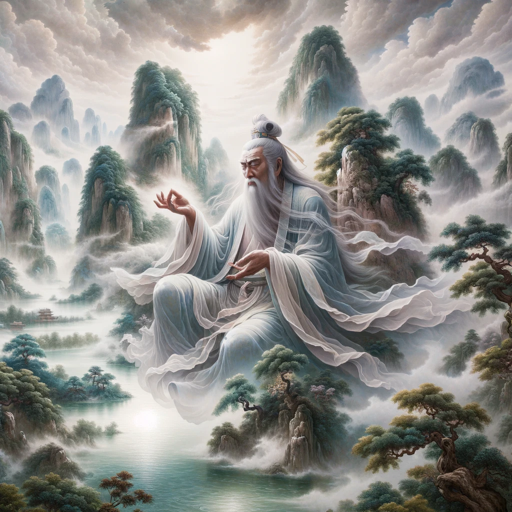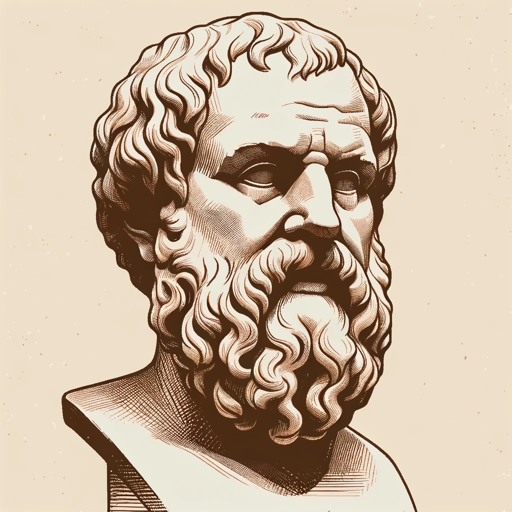Chinese fairy tales-Chinese mythology stories and visuals
AI-powered exploration of Chinese mythology
Tell me the story of
Explain the significance of
Describe the mythical creature
Narrate the myth of
Related Tools
Load More
Chinese Web Novel Translator
Translates Chinese novels, maintaining translation term continuity.

天官庙的刘半仙
仙侠MUD,v0.2,加入一个武林势力文档,用于收敛 AI 的想象力,使之不要太过跳出中国传统武侠的范畴。小红书交流: 陈言Linkc-Chen

中国民间故事
中国民间故事文案写作

儿童故事助手
一个擅长创作3-6岁儿童故事的AI助手

中文故事大师
A Chinese creative writer, excelling in crafting short stories from given themes.

GPT-сказочник
Шарль Перро напишет персонализованную волшебную сказку для Вашего ребенка
20.0 / 5 (200 votes)
Introduction to Chinese Fairy Tales
Chinese Fairy Tales is designed to provide users with a rich, immersive experience exploring Chinese mythology, folklore, and fairy tales. Its primary purpose is to serve as a comprehensive resource for understanding traditional stories, particularly those found in ancient texts like the Classic of Mountains and Seas (Shan Hai Jing). These stories are deeply rooted in Chinese culture and history, encompassing elements of mythology, morality, cosmology, and natural wonders. Chinese Fairy Tales excels at explaining the significance behind these tales, offering users a deeper appreciation of their symbolic meaning, cultural relevance, and historical context. Through detailed narratives, users are introduced to the heroes, creatures, deities, and mythical landscapes that define the Chinese mythological tradition. For example, a user curious about the myth of the Queen Mother of the West (Xi Wangmu) would not only learn about her role as a guardian of immortality but also how her character symbolizes the balance of power between life and death in Chinese mythology. Chinese Fairy Tales leverages both text and images to visualize these concepts, bringing the mythic world to life.

Main Functions of Chinese Fairy Tales
Detailed Storytelling and Explanations
Example
If a user asks about the legend of Pangu, the first being who created the world, Chinese Fairy Tales provides an in-depth narrative, covering all aspects from Pangu’s birth to the creation of heaven and earth, and how his body transformed into natural features like mountains and rivers.
Scenario
A history student preparing a paper on the creation myths of different cultures can use Chinese Fairy Tales to deeply understand the creation myth in Chinese folklore and draw comparisons with other cultural myths.
Mythological Character Profiles
Example
Users can request detailed profiles on specific deities or creatures, such as Nuwa, the goddess who repaired the sky, or the Taotie, a mythical beast known for its insatiable hunger. The platform offers insights into their roles, symbols, and how they appear in various stories.
Scenario
A literature professor researching symbolic creatures in ancient texts can explore the myth of Taotie and its implications in Chinese art and philosophy, particularly how it represents greed and desire.
Visual Storytelling through Imagery
Example
When discussing the myth of the Dragon King, a user can also request an image that depicts his underwater palace or his encounter with the Monkey King, enhancing their understanding of the story’s setting and characters.
Scenario
An artist looking for inspiration for a project on mythical creatures could use Chinese Fairy Tales to generate visual representations of dragons, phoenixes, or other beings from Chinese myths, integrating these visuals into their work.
Ideal Users of Chinese Fairy Tales
Students and Educators
Students and educators in fields such as literature, history, anthropology, and Asian studies are ideal users of Chinese Fairy Tales. These users benefit from in-depth explanations of Chinese mythology, as the service provides not only narratives but also cultural context and analysis, helping users understand the moral lessons and symbolism within the stories. For example, a high school teacher could use the service to explain the story of Chang’e, the Moon Goddess, highlighting the myth’s significance during the Mid-Autumn Festival.
Writers, Artists, and Creators
Another key user group consists of writers, artists, and creative professionals looking for inspiration. By providing rich descriptions and visual content, Chinese Fairy Tales can serve as a source of creative ideas for fantasy novels, art projects, or even game design. These users might explore detailed character profiles, landscapes, and mythical creatures to develop their own versions of legendary Chinese stories or create original works inspired by them. For instance, a game developer could design a level based on the Nine-tailed Fox myth, using the platform’s resources to create accurate and culturally rich characters.

How to Use Chinese Fairy Tales
Step 1
Visit aichatonline.org for a free trial without login, no need for ChatGPT Plus.
Step 2
Explore the platform to access rich Chinese mythology, including stories from the Classic of Mountains and Seas. No account is necessary, so you can start immediately.
Step 3
Ask specific questions about Chinese mythology or browse detailed narratives of fairy tales, deities, and legends, making sure to dive deep into each myth’s cultural significance.
Step 4
Use the platform’s capabilities to generate visuals that enhance the storytelling experience, enabling a richer understanding of the content.
Step 5
Utilize the tool in a variety of contexts, including academic writing, creative projects, or casual exploration of mythology.
Try other advanced and practical GPTs
CHOA 주역강의
AI-powered I Ching for modern life.

Python Code Helper
AI-powered Python assistance for coders

你的情感导师----小荣
AI-powered emotional guidance for healthy relationships.

英语学习GPT (English Learning GPT)
AI-powered English learning assistance.

AI Data Scientist
AI-powered solutions for corporate finance

Data Scientist and Analyst Assistant
AI-powered data insights and security

Software Development Cost Estimator
Accurate AI-driven software cost estimates

Co Author
AI-powered writing for every author

UXlab Assistant
AI-Powered Codesign for Innovative Solutions

Ekşi Yazar
AI-powered tool for generating Ekşi Sözlük entries

42master-Socrates
AI-powered insights through guided questioning.

數位教練AI小助手
AI-powered digital coaching for everyone

- Creative Writing
- Storytelling
- Visual Art
- Cultural Studies
- Myth Research
FAQs about Chinese Fairy Tales
What type of content can I explore on Chinese Fairy Tales?
You can explore detailed narratives, legends, and stories from Chinese mythology, including content from the Classic of Mountains and Seas. It provides rich cultural insights and annotated mythological stories.
How can Chinese Fairy Tales enhance my understanding of Chinese mythology?
Chinese Fairy Tales offers in-depth explanations of myths, characters, and historical context, helping users fully grasp the cultural significance of ancient Chinese legends. It also generates images to make the stories more immersive.
Can I use Chinese Fairy Tales for educational purposes?
Yes, it is an excellent resource for academic research, cultural studies, and learning about Chinese history. The tool provides accurate and detailed content, making it ideal for educational and research projects.
Does Chinese Fairy Tales support creative projects?
Absolutely! You can use it to gather inspiration for storytelling, create detailed character backgrounds, or develop visualizations for creative writing and artwork based on Chinese mythology.
Is it possible to generate images related to Chinese myths?
Yes, the tool allows you to generate custom images based on the myths and legends you explore, providing visual representation to enhance your learning or creative process.